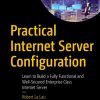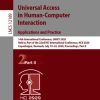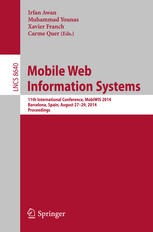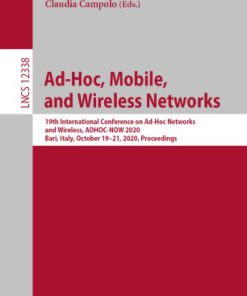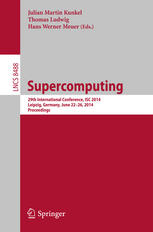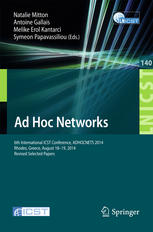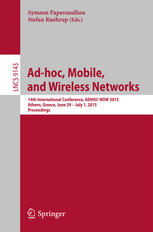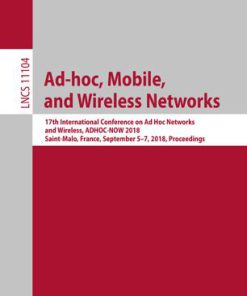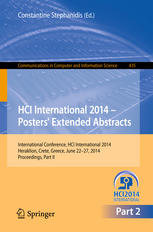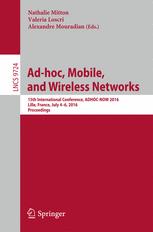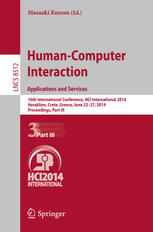Ad hoc Mobile and Wireless Networks 1st Edition by Song Guo,Pietro Manzoni,Stefan Ruehrup,Jaime Lloret 9783319074252 3319074253
$50.00 Original price was: $50.00.$25.00Current price is: $25.00.
Ad hoc Mobile and Wireless Networks 1st Edition by Song Guo,Pietro Manzoni,Stefan Ruehrup,Jaime Lloret – Ebook PDF Instant Download/Delivery:9783319074252,3319074253
Full download Ad hoc Mobile and Wireless Networks 1st Edition after payment

Product details:
ISBN 10:3319074253
ISBN 13:9783319074252
Author:Song Guo,Pietro Manzoni,Stefan Ruehrup,Jaime Lloret
This book constitutes the refereed proceedings of the 13th International Conference on Ad-hoc, Mobile and Wireless Networks, ADHOC-NOW 2014, held in Benidorm, Spain, in June 2014. The 33 revised full papers presented were carefully reviewed and selected from 78 submissions. The papers address such diverse topics as routing, cellular networks, MAC and physical layer, mobile ad hoc, sensor and robot networks, localization and security, vehicular ad-hoc networks.
Ad hoc Mobile and Wireless Networks 1st Table of contents:
Combined Mobile Ad-Hoc and Delay/Disruption-Tolerant Routing
1 Introduction
2 Related Work
3 Combined MANET/DTN Routing
3.1 Packet Buffering
3.2 Utility-Based Forwarding
4 Evaluation Setup and Scenarios
4.1 Scenarios
4.2 Metrics
5 Results
6 Conclusion
References
A Multipath Extension for the Heterogeneous Technology Routing Protocol
1 Introduction
2 Related Works
2.1 Heterogeneous Ad Hoc Networks
2.2 Multipath Routing Protocol for Ad Hoc Networks
3 HTR Overview
3.1 Routing Module
3.2 Multipath
4 Methodology and Simulation Model
5 Results and Discussion
5.1 Statistic Methods
5.2 Throughput
5.3 Expended Energy (EE)
5.4 Packet Loss Ratio (PLR)
5.5 End-to-End Average Delay
5.6 Lessons Learned
6 Concluding Remarks and Future Works
References
Anticipation of ETX Metric to Manage Mobility in Ad Hoc Wireless Networks
1 Introduction
2 Related Works
3 Problem Statement
4 Metric Anticipation Algorithm
4.1 Relationship between FER and Signal Strength
4.2 Metric Anticipation
5 Signal Strength Prediction Algorithm
5.1 Linear Regression Method
5.2 Experimentations
6 Simulations
6.1 Parameter Settings
6.2 Simulation Scenarios
6.3 Simulation Results
7 Conclusion
References
O-SPIN: An Opportunistic Data Dissemination Protocol for Folk-Enabled Information System in Least De
1 Introduction
2 Preliminaries: The Folk-IS Paradigm and Architecture
2.1 Data Dissemination in Folk-Net
3 The Proposed Opportunistic SPIN
3.1 O-SPIN in a Nutshell
3.2 Neighbour Discovery
3.3 Energy Conservation
3.4 O-SPIN Packets and Data Structures
3.5 Next-Hop Selection Criteria
4 Performance Evaluation
4.1 Simulation Settings
4.2 Simulation Results
5 Conclusion
References
Probing Message Based Local Optimization of Rotational Sweep Paths
1 Introduction
2 Descriptions of Algorithms and Correctness
3 Cost Analysis
4 Simulation
5 Related Work
6 Conclusion
References
Cellular Networks
Towards Bottleneck Identification in Cellular Networks via Passive TCP Monitoring
1 Introduction
2 Related Work
3 Methodology
3.1 Methodology Overview
3.2 Measurement Setup
3.3 TCP Connection-State Tracking
4 Extraction Algorithms for Performance Metric
4.1 Round Trip Time
4.2 Retransmission Detection
4.3 Outstanding Data, awnd and cwnd
4.4 Decision on the Limitation of Outstanding Data
4.5 Throughput Estimation
5 Validation in a Real Network
5.1 Analysis of TCP Connections to Controlled Test Servers
5.2 Analysis of TCP Connections to Internet Servers
6 Conclusions and Ongoing Work
References
Connectivity-Driven Attachment in Mobile Cellular Ad Hoc Networks
1 Introduction
2 Related Work
3 A Greedy Attachment Strategy
3.1 Architecture
3.2 Connectivity Information Exchange
3.3 Attachment Decision
4 Performance Evaluation
4.1 Global Performance Comparison
4.2 Impact of Thresholds
5 Conclusions and Perspectives
References
Hybrid Model for LTE Network-Assisted D2D Communications
1 Introduction
2 Overview on D2D Use Cases
2.1 D2D Use Cases Classification
2.2 Operator Role in D2D
3 D2D Peer Discovery and Communication Establishment
3.1 D2D Peer Discovery Approaches
3.2 D2D Communication Establishment
3.3 Existing Solutions
4 A Hybrid Model for D2D Discovery and Communication
4.1 Motivations and Proposal
4.2 Enhanced eNB Role for Local D2D Services
4.3 A Reliable Direct Discovery Mechanism
4.4 An Optimized and QoS-Enabled Communication through eNB
5 Discussion
6 Conclusion
References
On the Problem of Optimal Cell Selection and Uplink Power Control in Open Access Multi-service Two-T
1 Introduction
2 System Model and Background Information
3 Optimal Cell Selection: A Game Theoretic Approach
4 Non-cooperative Cell Selection Algorithm Based on Learning and Power Control
5 Numerical Results and Discussions
6 Concluding Remarks
References
A Smart Bluetooth-Based Ad Hoc Management System for Appliances in Home Environments
1 Introduction
2 Related Work
3 Proposed Architecture and Control Applications
3.1 Control Application for Server
3.2 Control Application for Client
4 Database Structure
5 Communication Protocol
6 Test Bench and Operation System
6.1 Graphic User Interface
6.2 Test Bench
7 Conclusion
References
MAC and Physical Layer
A Distributed Time-Domain Approach to Mitigating the Impact of Periodic Interference
1 Introduction
2 Related Work
3 Distributed Classification
3.1 Identification of Strongest Interferer
3.2 Classification
3.3 Distribution
3.4 Comparison with Earlier Work
4 Pattern Synchronization
4.1 Temporally Locating the Impulses
4.2 Tracking Located Interferers
4.3 Comparison with Earlier Work
5 Results
6 Conclusion
References
A Passive Solution for Interference Estimation inWiFi Networks
1 Introduction
2 Inferring Interference
3 Computation of the Saturation Throughput
4 System Implementation: A MAC-Layer Approach
5 Experimental Evaluation
6 Conclusions
References
Adaptive Duty-Cycled MAC for Low-Latency Mission-Critical Surveillance Applications
1 Introduction
2 Criticality-Based Node Scheduling
3 Adaptive MAC Protocol Design
3.1 Sentry Selection Phase
3.2 Determining Duty-Cycling Pattern
4 Preliminary Simulation Results
5 Conclusions
References
How to Improve CSMA-Based MAC Protocol for Dense RFID Reader-to-Reader Networks?
1 Introduction
2 System Model
3 Related Work
3.1 CSMA-Based Approach
3.2 Activity Scheduling Approach
4 Overview of Investigated Adaptive Protocols
4.1 Maximum Backoff or Reverse-Backoff
4.2 Idle Sense
4.3 Sift
5 Performance Evaluation
5.1 Performance Metric
5.2 Results
5.3 Coverage and Latency
6 Discussion and Conclusion
References
Revisiting the Performance of the Modular Clock Algorithm for Distributed Blind Rendezvous in Cognit
1 Introduction
2 Related Work
3 The Modular Clock Algorithm
4 Estimation of the Expected TTR
5 Evaluation
6 Conclusion
References
Mobile Ad Hoc, Sensor and Robot Networks
A Preventive Energy-Aware Maintenance Strategy for Wireless Sensor Networks
1 Introduction
2 An Analytical Energy Dissipation Model
3 The Centralized Proactive Maintenance Strategy
3.1 Coordination Architecture
3.2 The HCPMS Robot Scheduling Algorithm
4 The Distributed Proactive Maintenance Strategy
4.1 The Fixed Distributed Proactive Maintenance Strategy
4.2 The Market Based Distributed Proactive Maintenance Strategy
5 Experiments
5.1 Experimental Setup
5.2 Model Validation
5.3 Performance Evaluation
6 Conclusion
References
Extending Network Tree Lifetime with Mobile and Rechargeable Nodes
1 Introduction
2 Related Work
3 Network Tree Lifetime
4 CoverMe
5 Evaluation and Discussion of the Results
5.1 Two-hop Networks
5.2 Multi-hop Networks
6 Conclusion and Future Work
References
Energy Efficient Stable Routing Using Adjustable Transmission Ranges in Mobile Ad Hoc Networks
1 Introduction
2 Related Work
2.1 Network Model
2.2 Routing and Route Discovery Protocol on MANETs
2.3 Stable and/or Energy Efficient Routing on MANETs
3 Proposed Stable, Energy Efficient Routing Protocols
3.1 GBR-STR
3.2 GBR-DTR
3.3 GBR-DTR-CNR
3.4 LBR-STR
3.5 LBR-DTR
4 Performance Evaluation
4.1 Simulation Setup
4.2 Simulation Results
5 Conclusions
References
K Nearest Neighbour Query Processing in Wireless Sensor and Robot Networks
1 Introduction
1.1 Our Contribution
2 KNN Query Processing in WSRN
2.1 KNN Boundary Estimation
2.2 Multiple Auction Aggregation Algorithm
2.3 Partial Depth First Search Algorithm
3 Performance Evaluation
3.1 Assumptions
3.2 Observations
4 Conclusion
References
Mobile Application Development with MELON
1 Introduction
2 Related Work
3 MELON Design
3.1 MELON Operations
3.2 MELON Implementation
4 Shared Whiteboard Example
4.1 Publish/Subscribe
4.2 RPC
4.3 Tuple Spaces
4.4 MELON
4.5 Summary
5 Quantitative Comparison
5.1 Results
6 Conclusions
References
Routing II
An Analytical Model of 6LoWPAN Route-Over Forwarding Practices
1 Introduction
2 Related Work
3 Analytical Model
3.1 Link-Layer Model
3.2 Multi-hop Model
4 Evaluation
5 Conclusion and Future Work
5.1 Future Work
References
A Traffic-Based Local Gradient Maintenance Protocol: Making Gradient Broadcast More Robust
1 Introduction
2 Related Work
3 GRABUP
3.1 Protocol Description
3.2 Example
3.3 Discussion
4 Performances Evaluation
4.1 Simulation Environment
4.2 Simulation Results
5 Conclusion and Future Works
References
Efficient Energy-Aware Mechanisms for Real-Time Routing in Wireless Sensor Networks
1 Introduction
2 Related Work
3 Proposed Energy-Aware Mechanisms
3.1 UPR Mechanism
3.2 UPS Mechanism
3.3 CAB Mechanism
4 Performance Evaluation
5 Conclusion
References
AODV and SAODV under Attack: Performance Comparison
1 Introduction
2 AODV and SAODV Routing Protocols
3 MANET Routing Attacks
3.1 AODV under Blackhole Attack
3.2 AODV under Grayhole Attack
3.3 AODV under Selfish Attack
3.4 AODV under Flooding Attack
4 Simulation Approach
5 Simulation Results
5.1 Blackhole Attack
5.2 Grayhole Attack
5.3 Selfish Attack
5.4 Flooding Attack
6 Conclusions
References
SMART: Secure Multi-pAths Routing for wireless sensor neTworks
1 Introduction
2 System Model and Basic Idea
2.1 Attack Model
2.2 Basic Idea
2.3 Notations
3 ETKE Description
3.1 Key Setup Phase
3.2 Case 1: KIN Is Available
3.3 Case 2: KIN Is not Available
3.4 Special Case
4 SMART Description
4.1 Initialization
4.2 Route Construction Process
5 Analysis of SMART Protocol
5.1 Security Mechanisms
5.2 Forged Hop Count Detection
5.3 Resilience Probability against Forged Hop Count
5.4 Wormhole Immunity
5.5 Energy Consumption
6 Conclusion
References
Localization and Security
A Robust Method for Indoor Localization Using Wi-Fi and SURF Based Image Fingerprint Registration
1 Introduction
2 Related Work
2.1 Wi-Fi Based Positioning Technology Fingerprint
2.2 RSS Fingerprint Registration
2.3 Euclidean Distance
2.4 Image Registration
2.5 Feature Extraction Algorithm
3 Experimental Environment
3.1 Experimental Data Collection
3.2 Wi-Fi Filter Implementation on RSSI
3.3 Wi-Fi Probabilistic Filter Model
3.4 Image Filter Implementation
4 Performance Assessment and Results
5 Conclusion
References
A Robust Approach for Maintenance and Refactoring of Indoor Radio Maps
1 Introduction
2 Related Work
3 System Architecture
4 Trajectory Calibration and Matching
4.1 Calibration of Trajectory
4.2 Modelling of the Physical Map
4.3 Path Matching Algorithm
5 Update Policy
5.1 Update Policy and Mechanism
5.2 Optimizing the Update Process
5.3 Hierarchical Localization
6 Experiments and Evaluation
7 Conclusion
References
Performance of POA-Based Sensor Nodes for Localization Purposes
1 Introduction
2 Distance Determination Methods
2.1 Distance Estimation Using POA
2.2 Distance Estimation Using RSSI
3 Evaluation of the Distance Estimation Methods
4 Evaluation of Localization Algorithms
4.1 Protocol
4.2 Performance Evaluation of the Position Error
5 Conclusion
References
On the Attack-and-Fault Tolerance of Intrusion Detection Systems in Wireless Mesh Networks
1 Introduction
2 State-of-the-Art IDS Solutions
3 AFT Mechanisms Diagram
4 AFT-Design for WMN IDS
4.1 Resourceful IDS
4.2 Resourceless IDS
4.3 Solutions for AFT-Design of IDS
5 Performance Evaluation
5.1 Resourceful IDS
5.2 Resourceless IDS
6 Conclusions
References
Multihop Node Authentication Mechanisms for Wireless Sensor Networks
1 Introduction
2 Multihop Authentication Protocols for WSN
2.1 Direct Join to Sink : DJSorig
2.2 Indirect Protocols to Join the Sink
3 Formal Security Evaluation
3.1 Scyther Overview
3.2 Results
4 Quality of Protection Evaluation
5 Conclusion and Discussion
References
Vehicular Ad-Hoc Networks
Performance Analysis of Aggregation Algorithms for Vehicular Delay-Tolerant Networks
1 Introduction
2 Related Work
3 Aggregation and De-aggregation Algorithms
4 VDTN Laboratorial Testbed
5 Performance Analysis
6 Conclusion and Future Work
References
VEWE: A Vehicle ECU Wireless Emulation Tool Supporting OBD-II Communication and Geopositioning
1 Introduction
2 Related Works
3 The OBD-II Standard
3.1 Communication Protocols
3.2 Diagnostic Trouble Codes (DTCs)
3.3 OBD Message Formats
3.4 OBD-II PIDs
4 VEWE: Vehicle ECU Wireless Emulator
4.1 VEWE Server
4.2 GPSEmulator
4.3 OBDIICapture
5 VEWE Implementation Details
5.1 The Vehicle Simulator
5.2 Emulating GPS Coordinates
5.3 Emulated OBD-II Interface
6 Conclusions
References
Density Map Service in VANETs City Environments
1 Introduction
2 Related Works
3 Proposed Scheme
3.1 Definitions, Hierarchy Constructions and Procedures
3.2 Segment-Wise Virtual Gateway Creation and Density Information Collection
3.3 Selection of Border Nodes and Virtual Gateway
3.4 Aggregation Based Data Collection and Density Share Algorithm
3.5 Density Informatio on Extraction
4 Performance Evaluation
4.1 Simulation Environment
4.2 Results and Discussion
5 Conclusion
People also search for Ad hoc Mobile and Wireless Networks 1st :
ad hoc mobile wireless networks protocols and systems 1 e
ad-hoc mobile and wireless networks book
ad hoc mobile wireless networks protocols and systems pdf
ad hoc mobile wireless networks principles protocols and applications
what is ad hoc in wireless networks
Tags:
Song Guo,Pietro Manzoni,Stefan Ruehrup,Jaime Lloret,Wireless,Mobile
You may also like…
Computers
Ad Hoc Mobile and Wireless Networks 1st edition by Luigi Alfredo Grieco 3030617459 9783030617455
Computers - Computer Science
Computers - Computer Science
Computers - Computer Science
Computers - Networking
Computers - Computer Science


